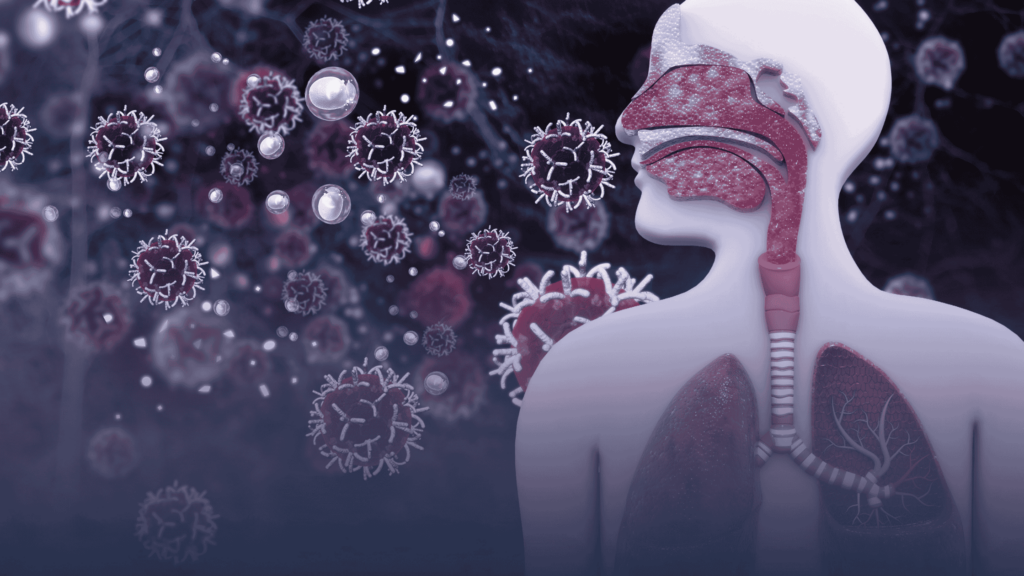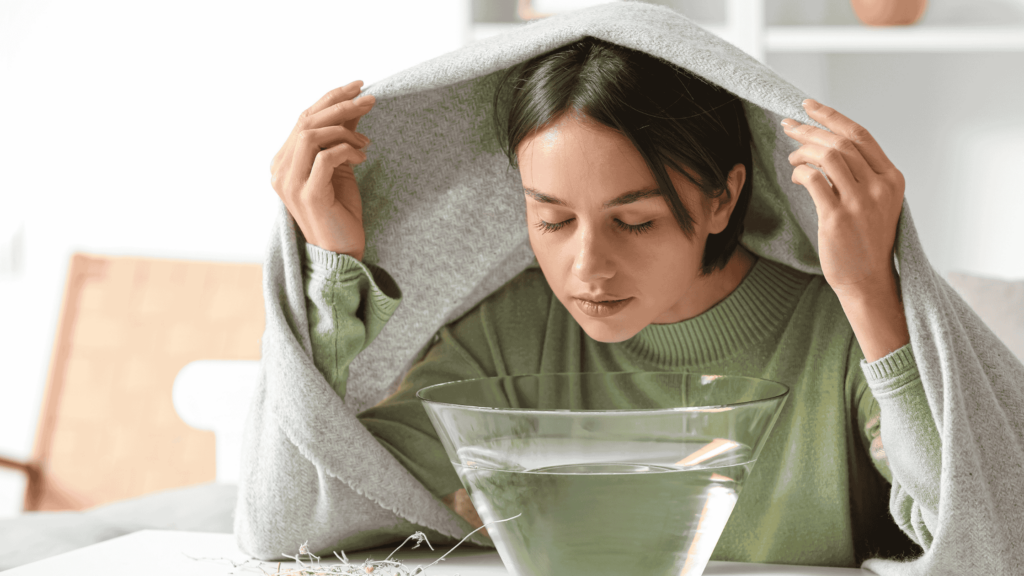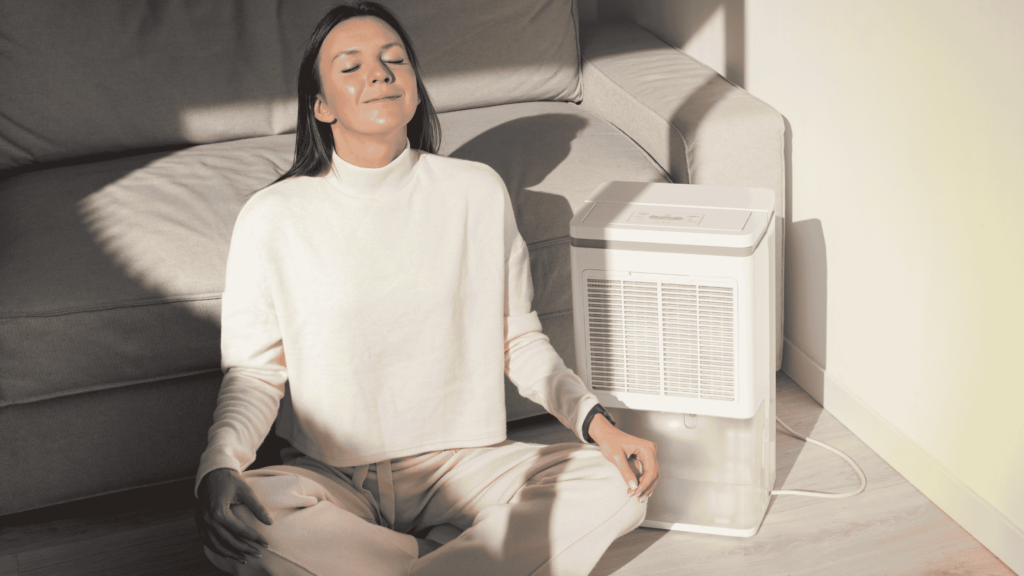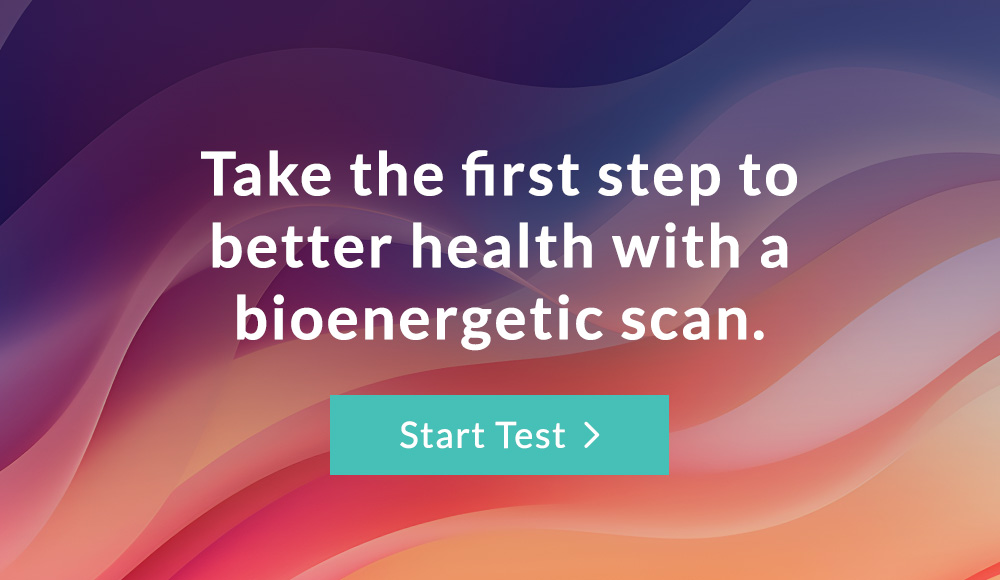
How to Breathe Easy with Lung Support Tips
Lung support is something many of us overlook, but just think about everything these amazing organs do for us!
Every breath fuels your body with oxygen, clears out carbon dioxide, and keeps your cells functioning. Your Respiratory System, including your lungs, works tirelessly to protect your body while keeping things running smoothly.
The lungs offer more than just oxygen, though! They are part of a dynamic respiratory system that shields you from environmental invaders like pollutants and allergens. Each component, from the airways to the diaphragm and alveoli, has a specific function that maintains lung support and harmony across other body systems.
Unfortunately, daily life can throw a lot at your respiratory system—environmental toxins, unhealthy habits, and even stress can take a toll. That’s why this blog is packed with tips for lung health, natural remedies for lungs, and ways to help your Respiratory system thrive.
Taking care of your lungs goes beyond just better breathing. Healthy lungs are vital for Cellular Metabolism, ensuring your cells get the oxygen they need to produce energy. They also support your Cardiovascular System, as oxygen-rich blood flows from the lungs to the heart and is pumped throughout the body.
Whether you’re looking for natural lung support or simply to understand more about how breathing influences your health, we aim to make this guide a breath of fresh air.
Roles Of The Lungs and Respiratory System
Your lungs and respiratory system are hardworking multitaskers that keep your body thriving.
Without them, your body wouldn’t be able to:
- Vocalize and express yourself.
- Maintain pH or acid-base balance to keep your internal environment stable.
- Warm and moisten the air you breathe in.
Your lungs (and Respiratory System) are a key part of the body’s detox system! The lungs trap harmful particles in mucus and work to expel them from your body.
The Respiratory Team: Components Working Toward Lung Support
Several parts of your respiratory system collaborate to make breathing effortless and efficient. These include:
- The nose and nasal cavity
- Pharynx (throat)
- Larynx (voice box)
- Trachea (windpipe)
- Bronchi
Each structure plays a unique role in the process of respiration.
The Nose and Nasal Cavity: These are the primary entry points for air. They warm, moisten, and filter the air before it moves further into the respiratory system. Think of this warm air as natural lung support.
The Pharynx and Larynx: Air travels from the nasal cavity to the pharynx (throat) and then to the larynx (voice box). The larynx houses your vocal cords and also acts as a protective gate, preventing food and drink from entering your airway when you swallow.
The Trachea and Bronchi: Air flows into the trachea (windpipe) from the larynx, which divides into two bronchi—one for each lung.
Inside the Lungs: Your lungs are further divided into smaller branches called bronchioles, which end in tiny air sacs known as alveoli. It’s in the alveoli that the critical exchange of oxygen and carbon dioxide occurs.
The Exchange of Gases: Oxygen and Carbon Dioxide
At the heart of how your Respiratory System works is the process of gas exchange—where oxygen and carbon dioxide swap places between your lungs and bloodstream.
Here’s how it works:
- Oxygen in: When you inhale, oxygen from the air diffuses across the thin walls of the alveoli into nearby capillaries. The oxygen then binds to hemoglobin, a protein in your red blood cells, part of The Blood System on our bioresonance testing, which transports the oxygen to your cells throughout the body.
- Carbon dioxide out: At the same time, carbon dioxide—a waste product of Cellular Metabolism—travels from your blood into the alveoli and is exhaled.
Conditions such as asthma, chronic obstructive pulmonary disease (COPD), and pneumonia can impair your Respiratory system’s function, impact breathing, and may require lung support from conventional medicine. While conventional medicine often addresses severe respiratory conditions, incorporating natural remedies for lungs into your wellness routine may also offer additional support.
The Mechanics of Breathing
As you can see, breathing is a complex process! It can also be a very relaxing and intentional process when focusing on your inhalation and exhalation. During inhalation, your diaphragm and intercostal muscles contract, creating more space in your chest cavity. This lowers the pressure inside your lungs compared to the outside air, drawing air in.
Exhalation reverses the process: your diaphragm and intercostal muscles relax, reducing chest cavity space and pushing air out. This inhale-exhale cycle is repeated over and over, approximately 12 to 20 times per minute, for most adults at rest.
Breathing, Stress, and Your Nervous System
Breathing is a process we often take for granted, as it happens automatically without us having to control it consciously. This is under the power of the Nervous System, specifically the autonomic nervous system, or the ANS.
If you tested with a Full Scan, you may see a point on your report results called the Central and Peripheral Nervous System, or the CNS. The peripheral nervous system has a branch that regulates processes that are involuntary in the body, such as:
- Respiration
- Blood pressure
- Digestion
- Heart rate
As you may see, stress in your lungs may be related to stress in a branch of the Nervous System. Any stress in the Nervous System can leave us vulnerable to catching colds.
Breathe to Support Your Lymph System
Intentional breathing benefits more than just your lungs—it also supports your Lymph System. Diaphragmatic breathing, often called the thoraco-abdominal pump, creates pressure variations between the thoracic and abdominal cavities, helping to move blood and lymph toward the heart.
Deep breathing exercises are among the most effective tips for lung health, helping to reduce stress and enhance oxygen exchange.
Toxins That Affect Lung Health
When it comes to lung support, toxins can sneak into your daily life unexpectedly. From bacteria and viruses to chemicals and environmental pollutants, these stressors can quietly challenge your respiratory system. Some may even appear on your bioenergetic testing report under energetic toxins related to the Respiratory System.
Let’s start with the most common offender: the common cold. Often caused by bacteria or viruses, it leads to sinus congestion, coughing, and headaches we’re all too familiar with. While colds are temporary nuisances, many other toxins can significantly affect your respiratory health, especially since they’re often present in the air we breathe.

Bacterial Offenders
- Aerobacter
- Streptococcus pyogenes and pneumoniae
- Eikenella
- Enterobacter
- Mycoplasma
Besides the challenge of bacteria and respiratory viruses, we also encounter common chemicals that can stress and irritate the lungs – making lung support even more important during healing.
Chemical Irritants
Everyday chemicals can also irritate the lungs and compromise respiratory health.
- Acetone (nail polish and polish remover)
- Asbestos (older buildings or improper removal)
- Benzene (one of the most widely used chemicals in glue, adhesives, cleaning products, and paint stripper)
- Hexachlorophene (this may be used as an antifungal agent)
- Paraffin (candles)
We don’t usually think of things like heavy metals impacting the lungs until we realize that air pollution from car exhaust and factories releases heavy metals and particulates that settle on crops.
Heavy Metals
-
- Bismuth (sometimes in sprinkler systems)
- Cerium (self-cleaning ovens)
- Europium (television display screens, medical imaging, LED lighting)
- Cadmium (cigarette smoke)
- Titanium dioxide (coffee creamers)
Mold & Mycotoxins
Another environmental toxin to keep in mind is mold. Mold and mycotoxins can significantly negatively affect the lungs, particularly when inhaled over time or in large amounts. Mold spores can become airborne and trigger allergic reactions, respiratory irritation, and even infections, especially in individuals with weakened Immune Systems or preexisting respiratory conditions like asthma or COPD.
Some molds also produce mycotoxins, harmful compounds that can damage lung tissue, trigger inflammation, and impair lung function over time. Those living in damp or mold-prone environments face a higher risk. Common indoor molds include:
- Stachybotrys
- Alternaria (cereal grains like wheat, barley, rice, oats. Wood, brick, and canvas)
- Aspergillus (common outdoor mold, may also affect bread)
- Fusarium
- Cladosporium
The nose and nasal cavity are key entry points for mold and mycotoxins. Some people turn to our bioenergetic testing because they suspect they’re struggling with MARCoNS—linked to multiple antibiotic-resistant coagulase-negative staph. While MARCoNS has been debated in the medical community, it refers to a strain of staphylococcus bacteria that can contribute to respiratory issues.
Parasites
Even parasites cause respiratory problems. For instance, Babesia, a protozoan parasite transmitted by black-legged deer ticks, primarily infects red blood cells – causing babesiosis. This tick is also known for transmitting Lyme disease. Babesia can lead to symptoms like fever, chills, fatigue, anemia, and, in rare instances, shortness of breath.
By staying mindful of these toxins and minimizing exposure, you can prioritize lung support and keep your respiratory system functioning at its best.

7 Tips For Lung Health
When it comes to lung support, especially during the winter months when coughs, colds, and the flu are more common, there are simple steps and natural remedies for lungs that you can take to keep your Respiratory System strong and healthy.
Here are our top tips for lung health:
1. Keep Your Hands Clean
One of the easiest ways to protect your lungs is by washing your hands and wiping down surfaces regularly. Many organisms that enter your Respiratory System are spread through contaminated hands. Soap and water go a long way in keeping these germs at bay!
2. Refrain from Smoking and Vaping
Both smoking and vaping damage the lining of your respiratory tract, impairing your lungs’ ability to clear mucus. This increases the risk of diseases like COPD and lung cancer. The chemicals in smoke damage tiny hair-like structures called cilia, which help sweep mucus out of the lungs. Secondhand smoke can also affect your lungs and even your pets’ health.
Vaping, too, introduces toxins like tin, aluminum, lead, and nickel, along with formaldehyde and propylene glycol, into your lungs, adding stress to your Respiratory System.
3. Clean Your Air
Air filtration systems, like the Air Doctor, can improve air quality in your home by reducing pollutants, pet dander, allergens, and even mycotoxins. These devices are great for those concerned about respiratory health due to indoor air quality.
4. Exercise for Lung Support
Exercise helps to increase lung capacity and strengthen the muscles involved in breathing. It also boosts your Immune System, helping to protect against respiratory infections. Regular activity can reduce inflammation in the lungs and throughout the body, supporting overall lung health.
Always check with your licensed care professional before starting an exercise program.
5. Eat a Respiratory-Friendly Diet
A healthy diet of fruits, vegetables, lean proteins, and whole grains can nourish your lungs. Specific nutrients like Vitamins A, C, and E, along with magnesium, zinc, calcium, and potassium, are especially beneficial for lung function.
When magnesium is low, the action of calcium may be enhanced, and when magnesium is higher, this may block calcium. Having calcium available to move into cells helps with the smooth muscle contraction of the bronchioles.
6. Brew Some Tea
Herbal teas can be an easy yet effective part of natural remedies for lungs. Certain teas contain antioxidants that benefit the lungs and provide much-needed hydration and calmness for the nervous system.
- Peppermint Tea: Peppermint contains menthol, which has a natural soothing effect on the respiratory system and can help clear mucus from the airways.
- Ginger Tea: Ginger has anti-inflammatory properties that can help reduce inflammation in the airways, improve circulation, and ease symptoms of respiratory distress.
- Thyme Tea: Thyme has antimicrobial properties and can help treat respiratory infections and ease coughing. It can also help clear mucus from the lungs.
7. Steam Inhalation
Inhaling steam can help loosen mucus in the airways, making it easier to clear the lungs. You can do this by:
- Taking a hot shower and inhaling the steam
- Draping a towel over a bowl of hot water.
- Adding essential oils like eucalyptus, peppermint, or tea tree oil can further enhance the effect, as these oils have natural decongestant and antimicrobial properties.

5 Natural Remedies for Lungs
Natural lung support can incorporate herbs, nutrients, and homeopathic remedies into your routine. Here are five powerful options to promote respiratory health and better lung function:
1. Drainage: Foundations First! All areas of the body need to be draining optimally, and the lungs are no exception! Whole-body drainage remedies are helpful, but sometimes, utilizing remedies targeted at specific organs is more appropriate. A remedy like Lung Drainage is a homeopathic preparation that can offer lung support during a cold or flu.
2. Garlic has antimicrobial and anti-inflammatory properties, which can help protect the lungs from infections and reduce inflammation in the airways. You can add fresh garlic to your meals or take it raw for maximum benefit. Some people prefer making garlic-infused honey to ease respiratory issues.
3. Mullein (Verbascum thapsus) is an herb known for its ability to help soothe the Respiratory System. It’s beneficial for coughs, bronchitis, or other lung congestion issues. It is believed to be an expectorant and anti-inflammatory that can help clear mucus and soothe irritated lung tissues. You can enjoy it as a tea or use it in tincture form. Myrrh Intrinsic supports congestion and mucus clearing, along with supporting the sinus and helping the lymph system drain.
4. Lung Meridian Opener. In Traditional Chinese Medicine, the lungs are closely associated with the emotion of grief. Unresolved grief is said to consume our Qi, which impacts overall body energy and even the lungs’ defense. Emotional remedies like Solace Milieu support grief and feelings of anxiety, which can impact deep breathing.
The lungs also share a connection with the large intestine and can be supported with herbs and homeopathy. The Lung/Large Intestine Meridian Opener is one such support.
5. Quercetin is a natural remedy used for respiratory health and the integrity of blood vessels. It has shown some promise in reducing the effects of exposure to tobacco smoke and reducing inflammation. Foods rich in quercetin include capers, onions, and apples, making them excellent additions to a lung-supportive diet.

Natural lung support is unique to each individual, and sometimes, the best thing you can do is to clean up your surrounding environment as best you can. Whether you’re maintaining a tobacco- and vape-free home or using air filtration to combat mold and mycotoxins, reducing exposure to irritants can amplify the benefits of any remedy or supplement you choose.
If you’re ready to take a deeper dive into your respiratory health, our Full Scan can provide personalized insights into the energetic factors affecting your lungs and overall wellness. From identifying specific environmental stressors to a customized regimen, this comprehensive assessment may help you breathe easier—naturally.


